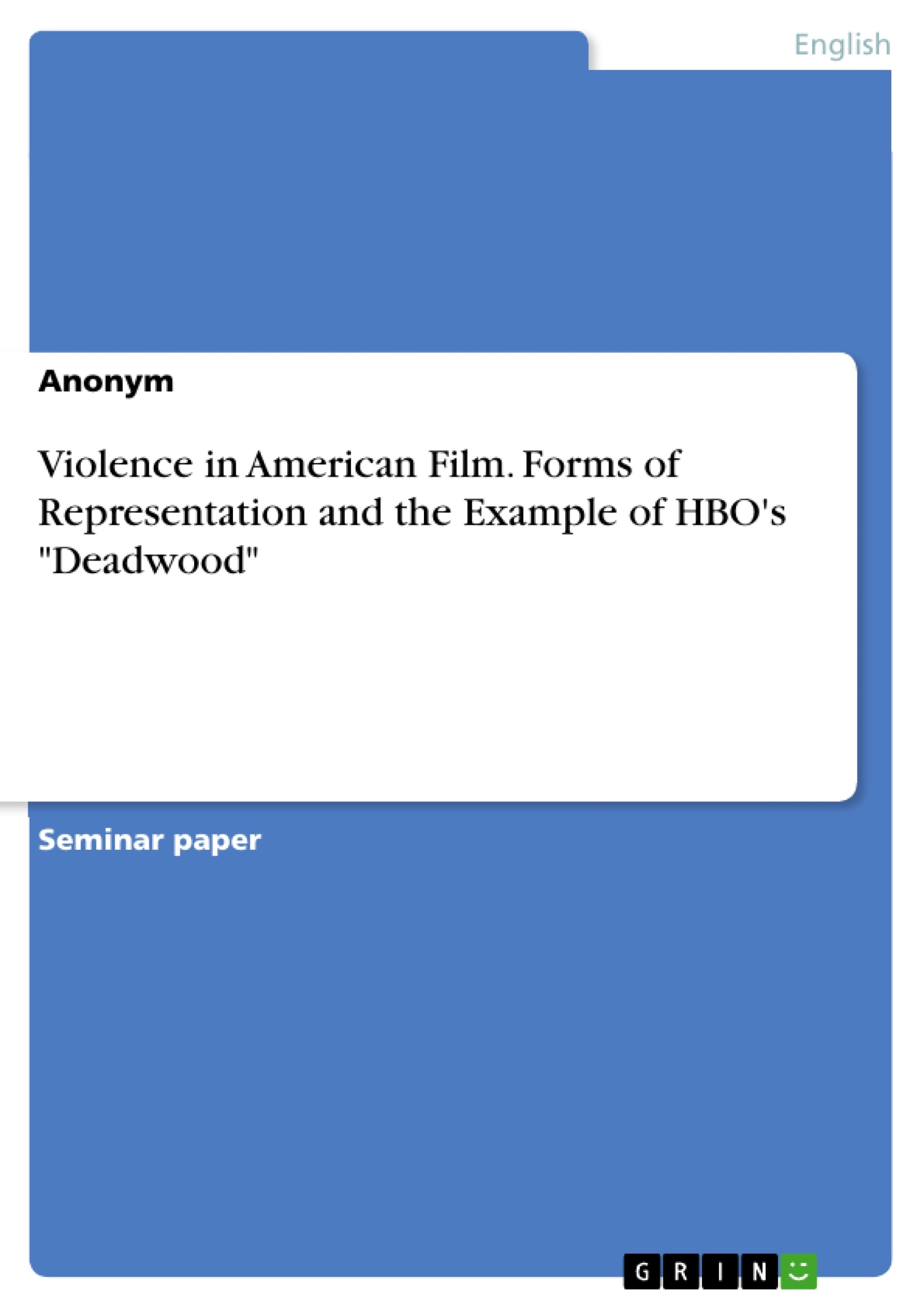This paper focuses on how the phenomenon of violence arouses, excites and attracts the observer of ferocity, brutality and bloodshed in American film.
Ever since the introduction of television technology to American society, the "tube" – as many Americans call their TV sets colloquially – has become an elemental component of today’s living rooms in the United States. Being aware of this fact, the competition for viewers among broadcasters in the television industry is constantly increasing with viewing figures for each TV program being released in the press on a regular basis.
In order to boost their viewing figures, producers are always on the hunt for the ideal combination of various genres for their daily program, aiming to always satisfy the audience as a whole and yield the maximum amount of concurrent viewers.
Inhaltsverzeichnis (Table of Contents)
- Introduction
- Defining the term "violence"
- Comic violence
- Transgressive and retaliatory violence
- Gratuitous violence
- Facts about violence in film and television
- Possible explanations for the insatiable excitement for violence on TV.
- HBO's Deadwood: Facts and figures.
- Depictions of violence in the first episode of David Milch's Deadwood
- Conclusion
Zielsetzung und Themenschwerpunkte (Objectives and Key Themes)
This paper aims to explore the phenomenon of violence in American film, specifically focusing on how representations of ferocity, brutality, and bloodshed excite and attract viewers. The paper utilizes David Milch's Deadwood to analyze the underlying reasons for this apparent fascination with violence in modern society. It aims to understand how the excitement surrounding violence contributes to the success and reception of television series like Deadwood.
- The definition and types of violence in film and television
- The prevalence and role of violence in American film and television
- Possible explanations for the fascination with violent content
- The analysis of violent scenes in Deadwood and their impact on the show's success
- The relationship between violence and viewer engagement in contemporary media
Zusammenfassung der Kapitel (Chapter Summaries)
- Introduction: This chapter sets the stage for the paper by discussing the pervasive presence of violence in American television and its connection to viewer engagement. It emphasizes the increasing competition among broadcasters and their reliance on violent content to attract audiences.
- Defining the term "violence": This chapter delves into different types of violence prevalent in film and television, starting with comic violence, characterized by humor and a lack of seriousness. It then moves on to transgressive and retaliatory violence, where the viewer is morally engaged and emotionally invested in the narrative. Finally, it explores gratuitous violence, which serves as mere spectacle and often lacks narrative relevance.
- Facts about violence in film and television: This chapter provides a brief overview of the historical development of violence in television, starting with its introduction in 1941 and its growing prevalence in contemporary media.
Schlüsselwörter (Keywords)
The paper focuses on themes such as violence in American film, viewer engagement, and the role of violence in media success. It examines the various types of violence, including comic, transgressive, retaliatory, and gratuitous violence, and investigates possible explanations for the fascination with violent content. The paper also analyzes the specific case of David Milch's Deadwood, highlighting the relationship between violence and the show's reception.
- Arbeit zitieren
- Anonym (Autor:in), 2018, Violence in American Film. Forms of Representation and the Example of HBO's "Deadwood", München, GRIN Verlag, https://www.hausarbeiten.de/document/1024895


